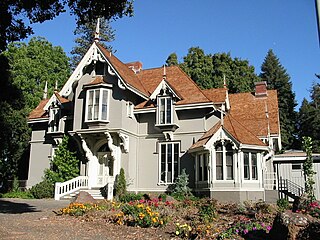What Is Infrastructure?

Municipal infrastructure generally refers to
- “hard” facilities (civil infrastructure)
such as streets, bridges, traffic signals, utilities (water/ gas/ electricity/ telecommunications) storm drains, rainwater pollution treatment, sanitary sewers, sidewalks, and driveways, and to
- “soft” facilities (green infrastructure)
such as trees, turf, landscaping, and native wildland plants.
Jurisdictions typically divide infrastructure into two post-construction categories – publicly maintained and privately maintained. Developers, however, typically divide infrastructure into two pre-construction categories – on-site (on private property) and off-site (in the public right-of-way). In either case, infrastructure design is generally not regulated by the Building Standards Codes, other than fire apparatus and hydrant access.
How Do Developers Pay For Infrastructure?
Developers use various methods to finance the construction of new infrastructure, which are generally categorized as short-term (i.e., included in the sale-price of a new home) and long-term (e.g., Mello-Roos municipal bonds which are paid-off with a 15+ year special property tax). Jurisdictions use various methods to finance the maintenance of new infrastructure, which are generally categorized as General Fund (e.g., citywide property tax base, gas tax subvention funds, citywide special property tax) and District Fund (e.g., Community Facilities District special property tax on new homes).
Design Standards
Jurisdictions have volumes of infrastructure regulations, litigation settlement agreements, policies, recommendations, and goals which they are legally mandated to enforce. There similarly are volumes of national, state, and regional design standards from which jurisdictions can pick to fulfill these regulatory controls. The “pick-list” of controls and standards include the following:
- CalTrans
- California Water Code
- Federal Clean Water Act
- National Sanitary Foundation
- Federal Highway Administration
- California Public Resources Code
- Code of Federal Regulations Title 40
- California Public Utilities Commission
- American National Standards Institute
- Regional Water Quality Control Boards
Federal Emergency Management Agency
- American Society of Sanitary Engineering
- American Public Works Association (Green Book)
Jurisdictions typically have two design paradigms for infrastructure constructed by developers. Prescriptive standards (City specifications/ details/ equipment/ materials) are required for publicly maintained infrastructure and performance standards (engineered) are allowed for privately maintained infrastructure. The reason is sensible. Public infrastructure is expected to have a longer life-cycle before replacement, to be subject to more frequent overloading, to be standardized for easier jurisdiction-wide maintenance, and to be subject to less frequent preventative maintenance (budgetary funding shortfalls).
Supplemental Analysis
There are various triggers for constructing infrastructure, such as developers’ preferences, Municipal Code regulation, Zoning condition, Subdivision requirement, environmental regulation, and development impact mitigation (California Environmental Quality Act or CEQA). Whatever the reason for constructing infrastructure, the design typically requires supplemental engineering analysis, including the following:
- Noise
- Traffic
- Hydrological
- Archeological
- Soil contamination
- Endangered species and plants
- Topographic and boundary surveys
- Rainwater runoff pollution pretreatment
- Horizontal and vertical survey monumentation
- Utility capacities (water/ gas/ electricity/ sewer/ drainage)
- Soil and geotechnical (fault zone/soil liquefaction/ landslide)
Jurisdictions and utilities may also charge fees for performing their own engineering analysis or for contracting with third-party professionals to perform peer reviews.
Construction
Jurisdictions typically require an Improvement Agreement (contract) and bonds to construct publically maintained infrastructure. The text of contracts and bonds are usually modeled on the California Government Code’s Subdivision requirements. Letters of credit (irrevocable) and certificates of deposit (assigned to the jurisdiction) may be accepted as substitute securities. If cash is deposited, jurisdictions typically will not pay interest. Bonding guarantees that the construction will be completed (if started) and that workmen, material suppliers, and subcontractors will be paid.
Jurisdictions and utilities may also charge fees for constructing some of the infrastructure themselves, either immediately or as part of a larger future project. If Impact Fees are not spent within a reasonable time (5 years), the developer has the right to request a refund. Projects which are subject to CEQA are required to have Construction Management Plans which set forth the details of how environmental impact mitigations will be accomplished during construction.
Maintenance
Jurisdictions typically require a post-construction Warrantee period (1 year) for publicly maintained infrastructure, at the end of which residual bonds are released. Jurisdictions typically require private maintenance agreements which encumber property title for private infrastructure that either jointly serves multiple properties or has an environmental or public safety purpose (e.g., clean water, flood control, sewage disposal, traffic control).
Check the following Links and your local jurisdiction’s website for additional information.
Links
BUILDING in CALIFORNIA